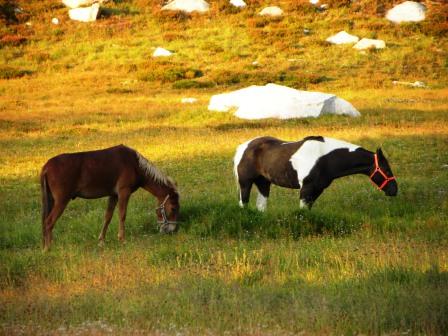
Read what Doctor Hardy DVM has to say on the subject

Read what Doctor Hardy DVM has to say on the subject
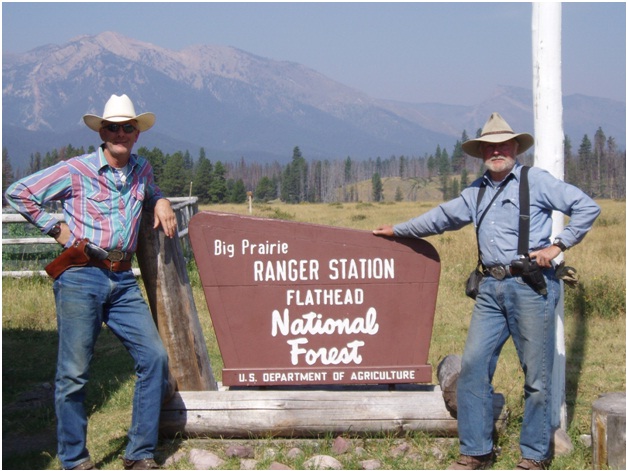
For those of you who live in the west, the term The Bob is probably very familiar. The Bob Marshall Wilderness in western Montana is a very popular riding area. My friend Bill Conger of the Squaw Butte Chapter of the Back Country Horsemen of Idaho and his wife Marybeth have ridden the Bob for many years but for me it was my first pack trip there. Ive spent a great deal of time in Idahos Frank Church River of No Return Wilderness and was excited to see the famous China Wall in the Bob of which I had only seen pictures. Read More
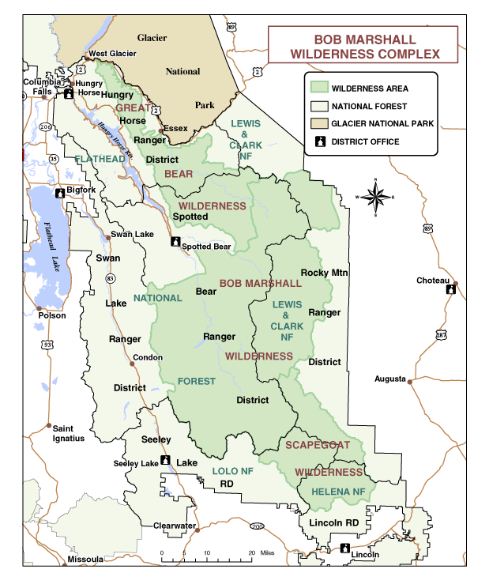
Like a bike with a flat tire or a tennis racket with a broken string, a horse with poor hooves has limited usefulness. But how to keep a horses hooves in their best condition is an often discussed and sometimes hotly debated topic. There are theories regarding horses feet that constantly keep horse owners contemplating the fact and fiction of hoof care.
Often misinformation is accepted as truth simply because it has been around a long time. In this article we address a few of the most common misconceptions about hoof care, and ask top experts to explain the truth behind the myths.
Myth: White hooves are softer and have more problems than black feet.
The color of the hoof is influenced by the color of the skin above it, so if a horse has white markings directly above the hoof, the hoof itself may carry the same pigmentation. Many people believe that hooves with black walls are stronger than hooves with white walls. Read more
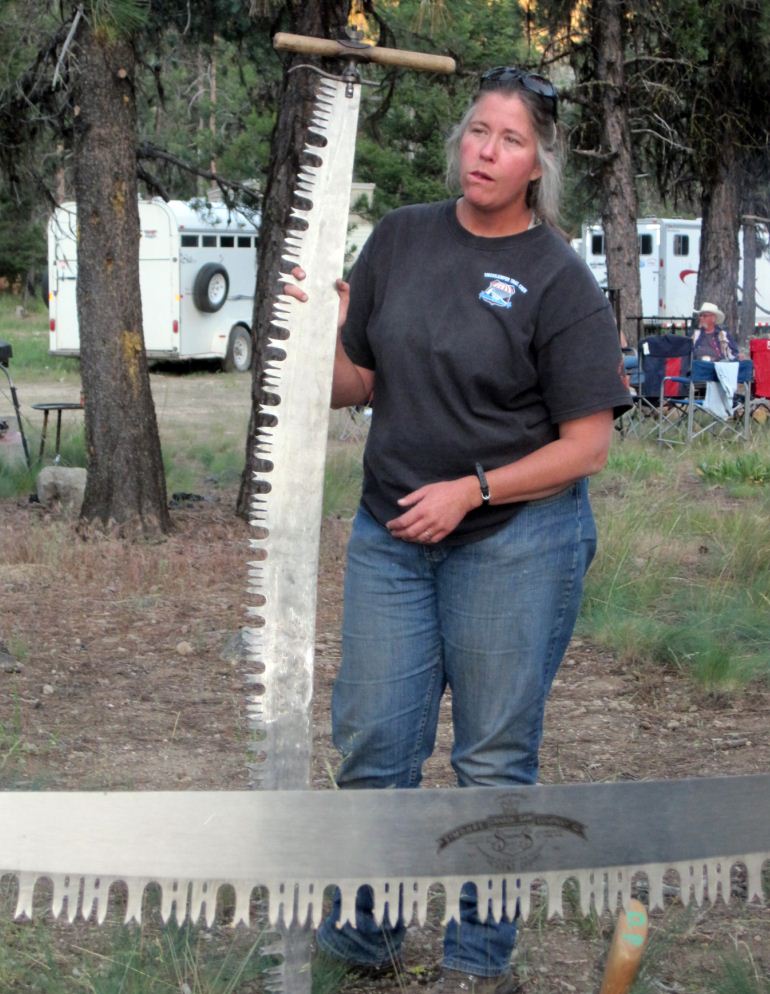
With more and more BCHA volunteers using crosscut saws to help clear wilderness trails the question comes up, how to sharpen a crosscut saw? Unlike a chainsaw that you can sharpen in the field or change a dull chain in a few minutes, crosscut saws do require some skill, special tools and a considerable amount of time to properly sharpen. With the idea of offering some support to BCHA volunteers I have put together a web page that should help with the issue. The new BCHW crosscut saw sharpening page can be found on the BCHW website under the Tech Tips link. It offers information on where or how to learn to sharpen as well as sources for some professional sharpeners. For those without web access many of the resources listed are available in other forms.
It does take some commitment of time and tools to pickup the skill but most anyone can learn to sharpen crosscut saws. There are formal week long training classes put on every year at the Nine Mile USFS Training Center, Lolo National Forest, Montana. The classes are open to anyone and the cost is reasonable. In addition the the formal hands on training there is some very good information available. The USFS Crosscut Saw Manual has step by step instructions and there is a new video/DVD by the Forest Service that is scheduled to be released soon. This video is very highly rated and should prove to be a valuable learning tool. In addition to the USFS resources there is other information and training aids linked on the BCHW Crosscut saw sharpening web page.
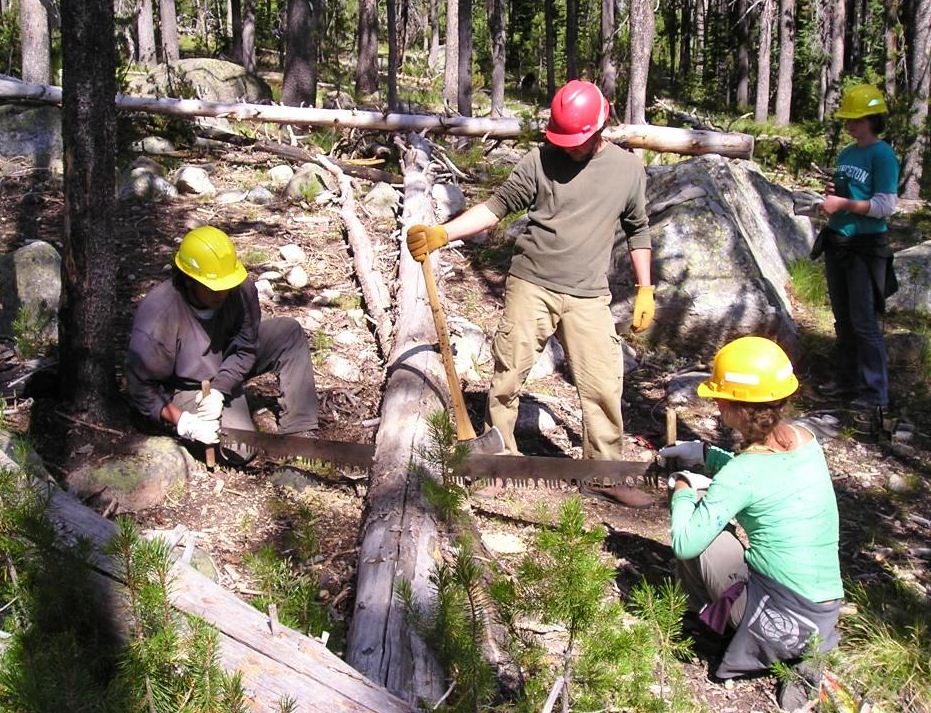
Another resource is an online crosscut saw forum at crosscutsawyer.com . This is a privately ran forum that has a wealth information on sharpening as well and other things related to crosscut saws. It is a little contradiction to have a modern internet forum for primitive tools but the knowledge of literally hundreds of years of experience from the forum members is amazing. If you do not find needed information in past posts, you can always ask.
In addition to the formal training or do it yourself learning there is the possibility of interested folks learning from BCHW members that are experienced saw filers. Both Gary Zink and myself have offered to help new filers pick up the skill. This would likely involve having members watch and ask question during a sharpening job. The timing and location of any of these sessions will depend on the interest and need. For BCHW to hold a week long, hands on training session is beyond the scope of any proposed training but we do have the resources to help and provide direction to anyone that is interested. No matter how a new filer picks up the skill, it will require quite an individual commitment of time and practice to become proficient.
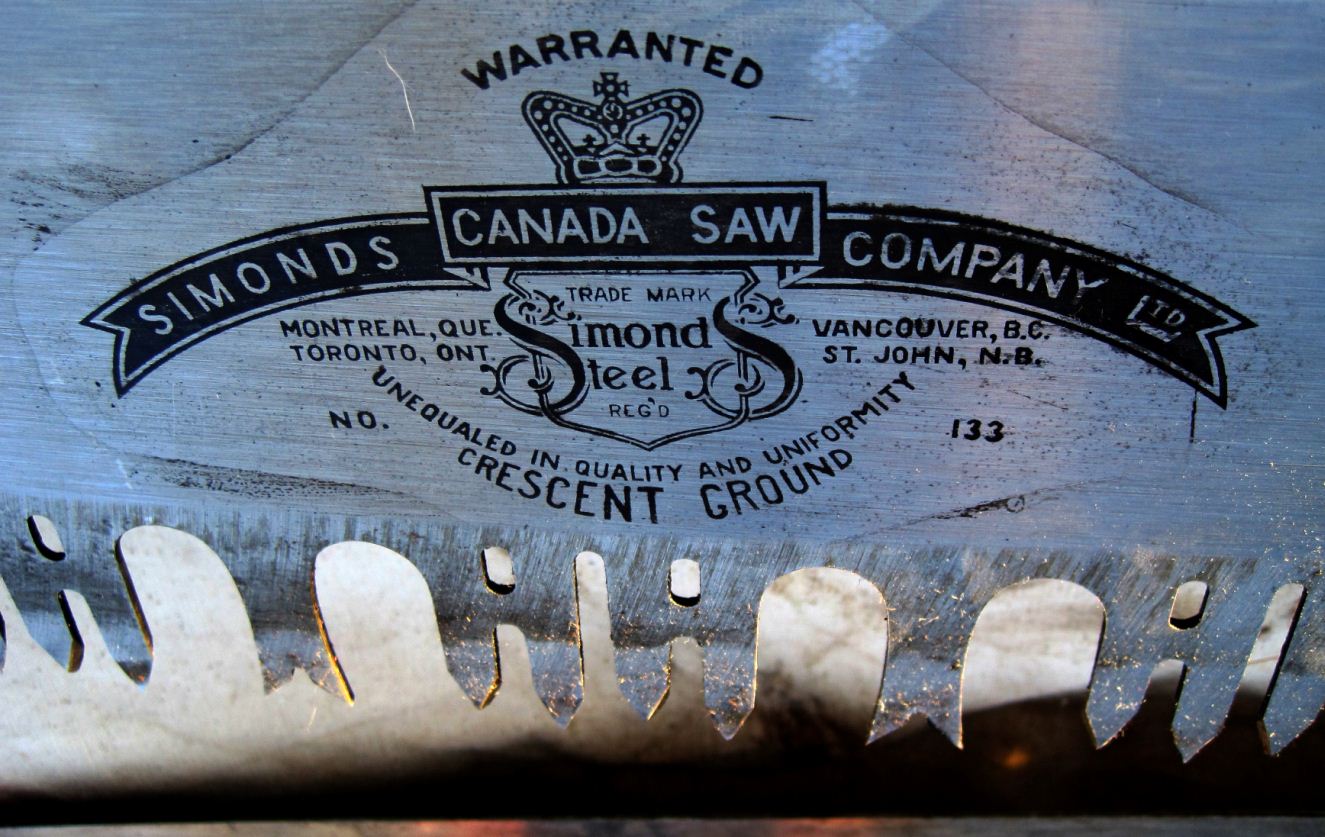
So the main purpose of this message is to let folks know of the resources available for those that want to learn how to sharpen a saw and offer any help in the process. Please have anyone that has any questions contact me or Gary. Also I do know that other BCHW members do sharpen saws and if they want to help out, let us know. Comments or suggestions are always welcome.
Jim Thode ( Webmaster and crosscut saw user and filer )
~~~
Subject: USFS Chainsaw and Cross cut saw certification programs
Good afternoon, BCHA . There is some information in this news letter about the new Chain saw and Cross cut saw program that is in the works. BCHA and some of the states have been supplying input to the agency, USFS, about this, including bringing it to the attention of the Deputy Chief, Leslie Weldon and the Director of Wilderness, Leanne Martin at the BCHA national board meeting. It appears there will be a document to read and comment on out pretty soon. It will be interesting to see what they have come up with.
Michael K. McGlenn
Chairman BCHA
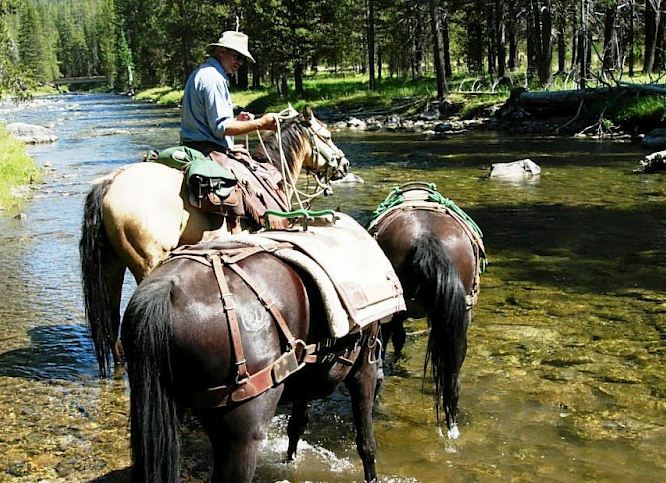
Dont leave home without considering your horses water needs. Heres what to plan for, plus hauling, watering, and use tips.
Let your horse drink from water sources along the trail or near the camp to conserve the water youve hauled in. Your trail horse needs about 10 to 30 gallons of water per day to stay hydrated and healthy. Youre responsible for meeting his critical water needs, whether you go on day rides, horse camp, or pack into the back country. Never assume water will be provided at the trailhead/staging area, and dont expect to find full water troughs in campgrounds.
Here, well tell you how to meet your trail horses water needs.
Plan Ahead: Use these planning trips when you haul your horse from his trusted water source.
There are three elements of a saddle that are of primary importance: the tree, the seat and the
rigging. If all three are properly designed and constructed, the result is a good, useful saddle,
regardless of style and aesthetics. If any one of these is wrong, or poorly done, the saddle is of
little value. This series of articles begins with a look at modern handmade saddle trees, the seat and rigging.
The first Decker Pack Saddle tree of its kind (with wooden bars and steel bows) was first used by an Arapajo packer named S.C. MacDaniels in central Idaho during the mining boom of 1898-1900. Several brothers named Decker saw the practicality of the idea, adopted it and made improvements to the Arapajo cover, or “half-breed” as it is know today. They applied for a patent on the tree and rigging, which apparently was never granted, and the name Decker Pack Saddle stuck. In the early 1900s, the Decker brothers established themselves as some of the finest packers in Idaho and Montana, packing thousands of pounds of equipment and supplies into the unroaded, trail-less terrain of the Selway and Lochsa Rivers, over Lolo Pass and into the Bitterroot Valley of Montana. All the while they were demonstrating the durability and versatility, as well as humane nature, of the Decker Pack Saddle.
The modern Decker Pack Saddle tree was perfected by blacksmith/saddle maker, Oliver P. Robinette of Kooskia, Idaho shortly after 1906. Robinette is credited with developing and manufacturing hundreds of the Decker trees and pack saddles for the Decker brothers as well as for local sheepmen and other outfitters and packers of the era. The Decker brothers could foresee a rapid increase in the use of this unique and clearly superior pack saddle and they made a deal with Robinette to market the saddle. It was advertised and sold as the Decker Pack Saddle. In later years, O.P. Robinette built many trees for the Forest Service (the “OPR” style Decker Pack Saddle tree) until his death in 1945.
At that time the twilight of the old west a generation of packers skilled in the use of the sawbuck and the traditional diamond hitch were passing into history, while a rapidly growing Forest Service needed transport for heavy, often bulky equipment through the vast roadless back-country. The Decker Pack Saddle, a rugged versatile saddle that could be easily packed to capacity by Forest Service personnel, filled this need. It caught on quickly throughout Idaho, Montana, Oregon and Washington, while in Wyoming, Colorado and California packers continued to use the sawbuck. In 1930, a “Remount Depot” was established in the Ninemile Valley west of Missoula, Montana, as a place to raise and train horses and mules, as well as train packers for the Forest Service. Horses and mules in sufficient quantity to supply fire fighters duing critical fire seasons had become difficult, if not impossible, to obtain from private sources. The Decker Pack Saddle was adopted as the official saddle and packing style in Region One (all of Montana, Northern Idaho, North Dakota and a bit of South Dakota). Part of the mission of the newly established Ninemile Remount Depot was to “develop improved methods of packing and standardize packing practices.” In 1937, a standard specification for the Decker Pack Saddle was prepared and that specification, with only minor modification, is still used today as the basic design of most Decker Pack Saddles.
The above information was taken from Packin’ In on Horses and Mules, Elser and Brown, 1980, “The Packer’s Field Manual”, Hoverson, 2005 and “Horses, Hitches and Rocky Trails”, Back, 1959.
Ray Holes Decker pack saddle are prized by Pacific North West packers.

June 17, 2012 – Glenn Ryan
Attached is the outline or framework developed by the Equine Safety Management Team, for developing consistent national policy regarding equestrian safety. I have also attached my own opinions regarding the gaps and issues in the Equine Management Strategy Framework.
Also, forward this to any appropriate personnel or group that would have valid comments on this issue.
Glenn Ryan, Lead Packer
ROCKY MOUNTAIN REGIONAL SPECIALTY PACK STRING
Send comments to:
Steve Beverlin
Regional Rangeland Program Manger
sbeverlin@fs.fed.us
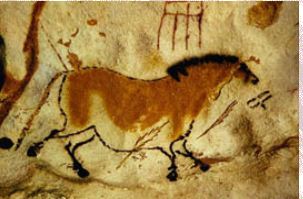
In the 1860s and 70s, photographer Timothy O’Sullivan created some of the best-known images in American History. After covering the U.S. Civil War, (many of his photos appear in this earlier series), O’Sullivan joined a number of expeditions organized by the federal government to help document the new frontiers in the American West. The teams were composed of soldiers, scientists, artists, and photographers, and tasked with discovering the best ways to take advantage of the region’s untapped natural resources. O’Sullivan brought an amazing eye and work ethic, composing photographs that evoked the vastness of the West. He also documented the Native American population as well as the pioneers who were already altering the landscape. Above all, O’Sullivan captured — for the first time on film — the natural beauty of the American West in a way that would later influence Ansel Adams and thousands more photographers to come.
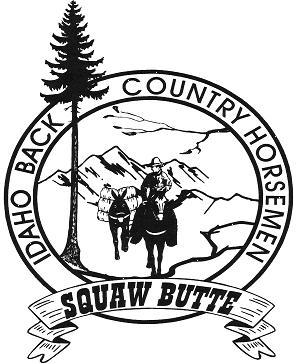
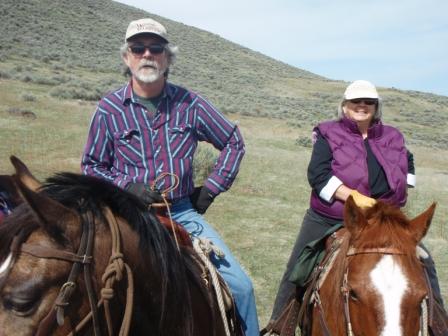
The first meeting, that lead to the formation of the Squaw Butte Chapter of Back Country Horsemen of Idaho was held on March 9, 1992.
At that meeting a board of directors and officers were elected. Terry MacDonald became the first President.
Click Here, To learn more about that first few meetings and some early history our chapter.
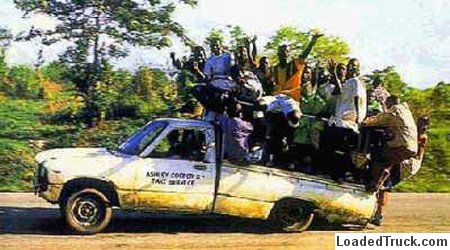
My 1999 F250 is starting to show it age. With over 210 thousand miles the leaf springs in the back have lost some of their bounce. Also the trailers I am towing today have a higher weight then when I started. Last summer I noticed that handling was getting soggy and I had to be careful not to get the trailer swaying. I briefly considered replacing it with a newer F350, but as the truck is otherwise in good condition, choose instead to upgrade the load capacity to around what a new F350 would have.

Knowing how to tie useful knots is an important skill for horse riders. Learn how to tie the knots below to make your rides more enjoyable and perhaps even safer. To lean how < Click Here>
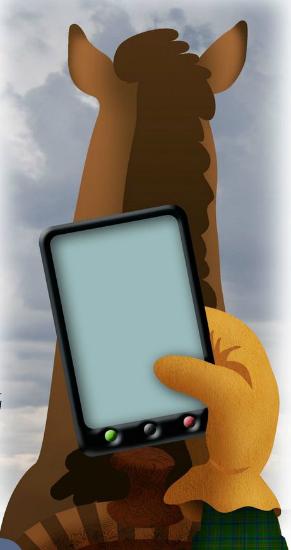
Texting while riding can’t be safe, read Bob Goddard “Last Laugh” piece on the growing trend in Horse Link Magazine Jan-Feb Issue. In the same issue Julie Goodnight has a piece on safely backing your horse out of your trailer.
Handling, riding, and driving horses have a number of risks.
Riding has some inherent risks, as when mounted, the rider’s head may be up to 4 m (13 ft) from the ground, and the horse may travel at a speed of up to 65 km/h (40 mph).
The injuries observed range from very minor injuries to fatalities. A recent study in Germany reported that the relative risk of injury from riding a horse, compared to riding a bicycle, was 9 times higher for adolescents and 5.6 times higher for younger children, but that riding a horse was less risky than riding a moped.
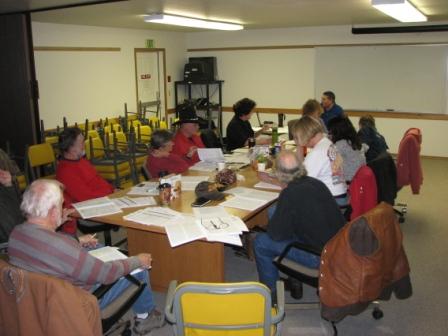
In Victoria, Australia, a search of state records found that equestrian sports had the third highest incidence of serious injury, after motor sports and power boating. In Greece, an analysis of a national registry estimated the incidence of equestrian injury to be 21 per 100,000 person-years for farming and equestrian sports combined. Other findings were that use of spurs may contribute to ankle fractures and dislocations, and helmets likely prevent traumatic brain injuries.
In the United States each year an estimated 30 million people ride horses, resulting in 50,000 emergency room visits (1 visit per 600 riders per year). A survey of 679 equestrians in Oregon, Washington, and Idaho estimated that at some time in their equestrian career one in five will be seriously injured, resulting in hospitalization, surgery, or long-term disability.
Among survey respondents, novice equestrians had an incidence of any injury that was threefold over intermediates, fivefold over advanced equestrians, and nearly eightfold over professionals. Approximately 100 hours of experience are required to achieve a substantial decline in the risk of injury.
Mechanisms of injury
The most common mechanism of injury is falling from the horse, followed by being kicked, trampled, and bitten. About 3 out of 4 injuries are due to falling, broadly defined. A broad definition of falling often includes being crushed and being thrown from the horse, but when reported separately each of these mechanisms may be more common than being kicked.
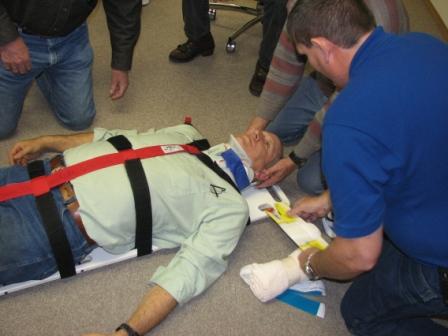 Types and severity of injury
Types and severity of injury
In Canada, a 10-year study of trauma center patients injured while riding reported that although 48% had suffered head injuries, only 9% of these riders had been wearing helmets at the time of their accident. Other injuries involved the chest (54%), abdomen (22%), and extremities (17%).
A German study reported that injuries in horse riding are rare compared to other sports, but when they occur they are severe. Specifically, they found that 40% of horses riding injuries were fractures, and only 15% were sprains.
Furthermore the study noted that in Germany, one quarter of all sport related fatalities are caused by horse riding. Most horse related injuries are a result of falling from a horse, which is the cause of 6080% of all such reported injuries.
Another common cause of injury is being kicked by a horse, which may cause skull fractures or severe trauma to the internal organs.
Some possible injuries resulting from horse riding, with the percent indicating the amounts in relation to all injuries as reported by a New Zealand study, include:
Arm fracture or dislocation (31%)
Head injury (21%)
Leg fracture or dislocation (15%)
Chest injury (8%)
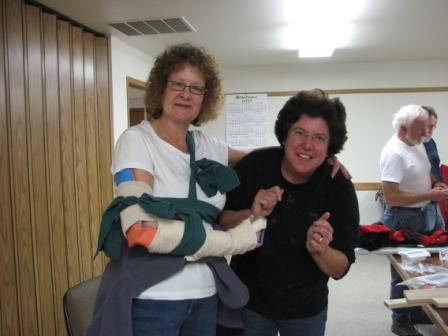 Riding in the Back Country
Riding in the Back Country
With the possibility of being injured very real, and the likely hood of being able to call 911 and have an EMT team arrive quickly very low, it is important that back country riders have training in First aid.
The typical first aid course available is for urban environments. All action plans start with “Is the accident scene safe?”, “Call 911”, “check for breathing”, etc.
When riding in the back country, a different type of training is necessary. It starts with the premises that help is 6 to 12 hours away and calling 911 is not the first step.
Squaw Butte is fortunate to have as a member Dan Murphy, who has been a professional EMT and emergency responder and teacher. Dan became certified to teach Wilderness First Aid for the American Safety & Health Institute in 2011 and in December lead a course for twelve of our members.
This sixteen hour course covered:
· Initial Assessment
· Physical Exam
· Vital Signs
· Shock Management
· Control of Bleeding
· Burn Care
· Assessing and Splinting Fractures
· Assessing and Treating Head & Spinal Injuries
· Environmental Hazards
· Biological hazards
· Wilderness first aid kits
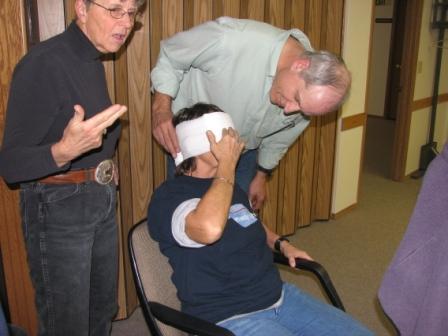 The course combined class room lectures and hands on training, with a heavy emphasis on what to do in typical situations that back country riders are likely to encounter in Idaho.
The course combined class room lectures and hands on training, with a heavy emphasis on what to do in typical situations that back country riders are likely to encounter in Idaho.
While we strive to make our rides and events as safe as possible, it is nice to know that a number of our members have taken the time to be trained so if an injury does occur they know what to do, to help have a positive outcome.
Marybeth Conger – President
Shannon Schantz, MD – Vice-President
Ellen Knapp – Co- Secretary
Chris Holt – Co- Secretary
Kay Ryan – Treasurer
Nancy Schindele – Alt State Director
Robbin Schindele – State Director
Phil Ryan – State Director
Charles Chick – Education Team
Lorraine Chick – Education Team
Bill Holt – Foundation Director
Rob Adams – Alt Foundation Dir.
Robbin Schindele – Public Lands Team
Bill and Chris Holt – Public Lands Team
Laurie Bryan – 2012 Public Lands Team
Phil Ryan – Public Lands Team
Rob Adams – Activity/Events
Dan Murphy – First Aide/ Wilderness First Responder Instructor
Rob Adams – Website
Charles Lox – Website Advertisement
Ellen Knapp – Life Flight
Janine Townsend – 2011 Volunteer Hours
Bill Conger – Calling Committee
Charles Lox – Calling Committee
Tess McKenzie – Calling Committee
Phil Ryan – Roving Reporter
Ellen Knapp – Chapter Agent of record
Terry & Gail McDonald – 2011 Yard Sale
Charles Lox – 2011 Yard Sale
Ellen Knapp – 2011 Yard Sale
Linda Hays – Newsletter Editor
Jake Lemon – 2011 Calendar Photos
Shannon Schantz, MD – Calendar sales
Robbin Schindele – Trail Classification
Phil Ryan – 2011 Sportsman Show
Shannon Schantz, MD – 2011 Horse Expo Show
Linda Hayes – SBBCH Shutterbug
Gail McDonald – 2011 Christmas/Holiday/ End of Year Party
Nancy Schindele – 2011 Christmas/Holiday/ End of Year Party
Chris Holt – 2011 Christmas/Holiday/ End of Year Party
Marybeth Conger – Membership Growth & Development
Shannon Schantz, MD – Membership Growth & Development
Marybeth Conger – Inventory
Shannon Schantz, MD – Inventory
Janine Townsend – 2011 AQHA/ BCH Ride
Robbin Schindele – 2011 AQHA/ BCH Ride
Margaret Berggren – 2011 AQHA/ BCH Ride
Shannon Schantz, MD – 2011 AQHA BCH Ride
Linda Hays – Face book Page SBBCH
Terry McDonald – Nomination Committee
Lou Ann Gaskell – Nomination Committee
Bill Brasfield – Nomination Committee
Heather Holloway – Ballot Counting
Jake Lemon – Ballot Counting
Charles Lox – Highway Cleanup
Rob Adams – 2011 Wilderness Pack Clinic
Janine Townsend – Audit Committee
Shannon Schantz, MD – Audit Committee
Lou Ann Gaskell – Audit Committee
It Official Folks . The SQUAW BUTTE CHAPTER of Back Country Horseman of Idaho had another FUN and SUCCESSFUL year in 2011 by increasing Membership Participation and Development.
How did the chapter increase Membership Participation and Growth? First, the Monthly Meetings were dramatically shortened with a call for agenda items for all members, including committee heads. This resulted in speakers organizing their thoughts beforehand, rather than droning on which saved time and showed respect to the rest of us. Tickets were given to all members and guests for some Fabulous and Fun Door Prizes. Items came from our annual Yard sale but by the end of the year, members were bringing in donations; everything from Duck eggs, Slippers from a Princess Cruise, to gently used Tack. Educational Fun topics were scheduled after the Monthly Meeting was adjourned, so members could choose to leave or attend. The net result, we had an average Attendance increase of 25% at our Monthly meetings.
Second, check out the attached SBBCH Committee list which documents a 45% Membership Participation rate. How cool is that. Bottom line these folks are the 2011 Heros for the Squaw Butte Chapter. All Chapter Committees were put in place by mid-February, rather than waiting to ask for volunteers at the monthly meetings. Committee members were chosen for both their skills set and a willingness to volunteer. Mentoring was accomplished by paring a new member with a more seasoned one. Plus, members werent afraid to attend the Monthly Meeting for fear of being roped into another project.All new members in 2011 received a hand written Thank you for joining Card with a Backcountry Packing photo that was separate from the highly important and voluminous membership packet. Several seasoned members reached out to these new folks and invited them to one of our events. New members were welcomed and introduced at the meetings and they never sat alone or in the back corner. Our calling committee communicated with them to determine interests and the best contact method. Seasoned Members reached out at meetings and sat with them vs. staying in their in the pre-established sitting areas.
Come on you know what I am talking about. We also had a $50.00 Gas card drawing at our Grand Jean July event to encourage participation. Consequently 70% of new members attended meetings and/or activities during the year. This number would be even higher as 3 new members live in California or North Dakota which would be quite the commute. Fostering new member involvement is important as they bring fresh ideas and perspectives to the Chapter.
A Continuing Goal of the SBBCH chapter is having many Diverse Activities throughout the year, so members can choose to participate in what interests them. Keep in mind members are not expected to attend all events but those that they can. Horse carpooling is encouraged too. Activities focused on Education, Public Outreach, Trail Projects, Fun Rides, Packing Adventures, and as always Great Food. SBBCH believes it is important to work with neighboring chapters vs. being competitive which helps BCHI to grow. Check out our website sbbchidaho.org which is getting a lot of attention.
Some of the 2011 activities include:
· Four Arena nights focused on Safety and Defensive Horsemanship
· Six Fun Rides to get Ourselves and Stock in shape while sharing good trail times
· Manning the BCHI Information Booth with neighboring BCHI chapters at the Horse Expo and Idaho Sportsman show
· Co- Sponsored a AQHA and BCHI Ride to Promote our Organization while having Fun & good Food
· USFS Sawyer ( A & B) Certification Class to promote partnerships while doing Trail projects
· CPR & First Aid Classes along with First Responder Training Classes to be Prepared
· Four Trail Projects putting our mighty muscles to work clearing trails
· USFS Large Saw Training for trail work in wilderness areas
· Two pack in/out Trail crews in the Frank Church Wilderness promoting a partnership with the Selway Bitterroot Foundation
· A record breaking Yard sale that will help fund chapter expenditures
· Highway cleanup and an
End of year Christmas/Holiday party that raised several hundred dollars for the local Idaho food back demonstrating our sense of communityNow if we can just remember to report all of our Volunteer hours for these and other activities that qualify. I suspect reporting hours will be a 2012 emphasis area for the Chapter along with celebrating our 20th Birthday. 2011 was a solid year for SBBCH and 2012 will be even better. See you on the trail and please feel free to stop by and see me as I start a new job opportunity in Emmett. Look for the Cherry Red Mustang on Washington Street, starting January 2nd.
While as a general rule, Squaw Butte doesn’t schedule chapter pack trip as part of their yearly schedule, members do get together and plan “private” trip into the various national forest and wilderness area throughout Idaho and nearby states. The 2011 summer was no exception. A number of trips were planned and taken. Some of the members shared their adventures with the group while other kept their experiences as private memories. Two trips that were shared were a six day saunter into the south eastern portion of the Sawtooth Wilderness. This trip started at the Grandjean trail head and followed the South Fork of the Payette river to it’s headwaters. The group camped at two excellent horse camps located by Elk and Ardeth lakes. A slide show video of this trip was posted on the chapter page on Youtube.
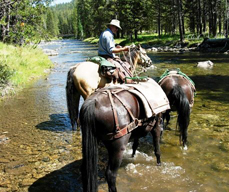
A number of the female members of the chapter banded together in September for a long weekend trip into the Frank Church Wilderness. Their experience, ranged from first timers to old hands. They choose the Elk Meadows area just north of Bear Valley. This area is known for its lush meadows, easy access to camp sites and a very pretty mountain lake. Their adventures are shared in “Equines & Estrogen” and “Girls Gone Wilderness” and in a Youtube video slide show.
Next labor day the chapter is hosting a long weekend mini-pack trip in to the Big Basin area south east of Sun Valley. More information about this upcoming trip will be posted in this blog in the future.
Reverend Charles Edward Mixon, 74, of Emmett, Idaho, lost his struggle with Alzheimer’s and joined the Lord, Saturday, Dec. 4, 2010. Ed passed away at home, attended by his wife, Diana, his main “companion”/caregiver, Angie and her family.
Ed was born in Griffin, Ga., to Rebecca P. and William s. Mixon. He was the youngest of five children. He obtained he theology degree from Emory University and was granted full clergy privileges to the North Georgia Conference of the Methodist Church in 1961. In 1963, Ed transferred to the Rock River Conference of Illinois as Director of Camps and conferences. In 1966, Ed was appointed to Arlington Hts. First Methodist Church as an Associate pastor. For the next 30 years, he faithfully served eight congregations of the Northern Illinois Conference of the United Methodist Church.
In 1956, Ed married Elizabeth A. Benedict. They later divorced, but had three sons during their marriage, Mike, Alan and Kevin. Ed enjoyed being with his sons and shared special activities with each of them. Mike and Kevin loved camping, fishing and hunting. Alan loved skiing. All of them enjoyed riding their motorbikes.
In 1985, Ed married a long-time friend, Diana King Damko. In 1996, Ed retired from the ministry and they moved to Emmett. They liked to garden, cook and enjoyed several outdoor activities together. Ed really found pleasure in exploring backwoods areas on horseback, hunting and fishing. Ed was just as content to sit quietly and enjoy watching a spike yearling walk down the road or five pheasant cocks sparring in the front pasture. In the last four years, he enjoyed the simple things in his life and being at home.
He is survived by his wife of 25 years, Diana; his three sons, Mike, Alan and Kevin; his brother, Bill; his two sisters, Bettie and Guinn; and four grandchildren. The family would like to thank X-L Hospice for the care and compassion they offered Ed and his caregivers.
A memorial service will be held at the Emmett United Methodist Church, 1500 E. Locust St., at 2 p.m. on Saturday, Dec. 11, 2010. In lieu of flowers, donations may be sent to the Alzheimer’s Association
Story about Ed (Terry MacDonald)
Eds favorite motto was any story worth telling is worth embellishing. The first time I met Ed he was helping with a back pack trip from Red Fish to Grand Jean with the Methodist Youth group from Sweet. Kirk Darnell and I packed food to Barron Lake and met them there, after several days of dehydrated food they were glad to See us, steak, potatoes, bacon and real eggs. Since we were to camp with two ministers and be on our best behavior we left all adult beverage at the trail head. After several days tending a bunch of teenagers the first thing out of their mouths was wheres the whiskey.
I don’t remember how long He was with the SBBCH only a couple of years, He got busted up pretty good one year and I don’t remember Him riding with us after that. He had one horse that gave him a hard time.
Ed ended up buying a couple of mexican ponies that someone was bringing in to the country at that time, they were good broke horses just don’t go near them when they were eating.
Kennally Creek Campground
Travel 10 miles south of McCall on Hwy 55 then 19 miles east on Paddy Flat Road (#388). There are eleven units/nine trailer units with drinking water from one centrally located hand pump, tables, fire pits, charcoal grills, handicapped accessible toilet, hitching rails and unloading ramp, pack in/pack out. Good trail access with no trailhead fee. There is a host at Paddy Flat Guard Station. Contact the McCall Ranger District at (208) 634-0400 for the most current information. There is a designated horse camping area, and a great overflow (no fee) area about 300 yards up the road from the campground. Three trails are available from this trailhead. Kennally Creek trail is a mostly level ride through big trees with a number of creek crossing that takes you to some small lakes if your willing to ride nine miles one way. The needles trail is a pretty steady climb with some loose rocky sections but is rewarded with some great views at the summit. The Black Mare trail starts with a short climb, followed by a very nice ride through big trees to Bill’s Lake. From the lake the trail climbs quickly up the end of the canyon to a saddle. The trail head is at 5600 feet, the saddle is at 7,900 feet and the last 1,500 is in less than a mile. The view when you get to the top is of the South Fork of the salmon river canyon, and it is spectacular. This is an end of the road trail head and camp ground, with very little traffic and very nice facilities. Loop pack trips are possible from this trail head, with a number of lakes and creeks to camp by. We saw very little sign of game, it had rained a couple of days before we started riding and the only tracks we saw on the trails were our horses.
I am unexpectedly home for a few days to regroup. I had 8 days of bad luck in getting to the Mid Fork. Will be launching another try very soon. The Frank Wilderness rangers told me that, the under-high-water trail that I wanted to use along the upper MF, is traditionally not only under water in spring, but also becomes washed out & impassable each year. They said with frustration in their voices, the trail crew tries to fix it each year, but their work never sticks. Rangers said, this is the only annual washout site along the entire MF trail system. It is also a major access for back packers.
I would like to propose to SBBCH, that we file a proposal with the FS to do a permanent fix to the wash-out site. It would require hauling in some bags of mortar, post mix cement & rebar. Of course, there is plenty of rock available at the site to do the envisioned rock work.
To get to the site, drive past Banner Summit a few miles, turn left at sign for Seafoam Area. Go 1.5 miles to Marsh Creek TH. Go down Marsh Cr. trail about 6 miles to confluence with MF & establish camp. Go another 1/2 mile down the MF to work site. The work would take about 4 guys about 1 day to complete. I have all the tools & experience required. I would volunteer to be project leader. I would need the help of some guys with reasonably healthy backs. I see this happening early summer of 2011.
Jake
Commentary from the lady who actually lives in the White House with black shutters of course, by Marybeth Conger, President
Can you believe its June already? I just returned from a nice ride with the entire string. We have a pack trip into the Frank Church Wilderness end of July, so its time to start getting in shape.
Looking at our 2nd quarter Chapter activities list, its been a busy year with many different opportunities for SBBCH members to learn and have fun. The SBBCH chapter continues to do an outstanding job offering a variety of activities such as Rides, Public Outreach programs, Educational clinics, Highway cleanup, Trail Projects, Back County 4-H demonstration, and yes, even a Yard sale to help with fund raising. We are educating not only ourselves on the importance of safety, but the public about the BCH organization and our historical right to use stock on public lands.
In April there was Wilderness First Responder training and the BCHI Horse Expo. In May there was even more such as Forrest Service Sawyer Safety, Talk to the Experts, Defensive Horsemanship, and Hands on Packing. In June, July and August there are many Trail Projects scheduled where we can ride together and discover some beautiful country in Idaho. Please check out our activity page and participate. We like to have fun on these projects and of course eat well.
Big thanks to the SBBCH members, for all your time and positive energy spent to make this chapter something to be proud of. Please continue to log your volunteer hours, including mileage and if you cant remember if you did, check out the summary screen. I cant wait to see you on the trail for some fun times this summer, especially our new members. If the SBBCH website doesnt answer your questions, or you would like to speak with a live body, you can always call me direct.
From the Outfitters Supply Catalog we are distributors for Outfitters Supply.<http://www.outfitterssupply.com>
The following are OUR prices:
· TrailMax In-line Swivel. WPH109 $10.95
· 2-leg Neoprene Hobbles WPH122 $24.50
· TrailMax Packers Scale 20-100 pounds WPA212 $30.95
· TrailMax Packers Scale 0-55 pounds WPA213 $27.95
· TrailMax H-Style Top Pack WPA150 $78.95
· Double Pack Cinch WPA216 $52.95
· Canvas Mantee, 7x8 hemmed, 15 oz WPA207 $32.95
· Canvas Mantee, 7x8 hemmed, 18 oz WPA107 $39.95
· Packers Field Manual by Bob Hoverson WBKPFM $17.50
· Lash Cinch WPA102 $31.95
· 3 Gallon Collapsible Water Bucket WPH161 $16.50
· Canvas Pack Pad WSP108 $47.95
And lots more top quality equipment and apparel, Visit our website or Call 208-398-7279
Spirithorse Enterprises – Ranch Wear and Supplies
www.SpiritHorseEnterprises.com // info@ccsutlery.com>
At the November State Board meeting of Back Country Horsemen of Idaho, the idea of a week long Wilderness Skills and Packing clinic sponsored by the State organization and open to Forest service and members of Back Country Horsemen of America was presented. All fifteen chapters approved the proposal with the Squaw Butte Chapter, Emmett Idaho taking the lead. The proposed clinic will have a student population of around twenty five and we anticipate a staff of fifteen, for a total of forty people. The clinic is planned to have students arrive on a Sunday, with classes starting Monday through the following Saturday. We will be following a curriculum developed by Back Country Horsemen of Idaho which has been presented a number of times to Forest Service personnel in Idaho and a joining state. The instructors are retired forest service employees and BCHI members, who have many years of back country and packing experience. We believe that the unimproved area of the Grandjean campground Sawtooth Ranger District would make a perfect venue for this course. The nearby trails, generally easy access for people attending and the scenic nature of the area are likely to increase interest in this clinic.
Proposal
The Squaw Butte Chapter of Backcountry Horseman of Idaho presents the following proposal to the state board of directors.
WHEREAS: One of the prime mandates of Backcountry Horseman is providing educational opportunities for our members.
WHEREAS: Opportunities for attending comprehensive multiday packing skills clinics are limited and can be expensive.
WHEREAS: Backcountry Horseman of Idaho has a number of members with extensive packing experience and a developed curriculum for such a clinic.
BE IT PROPOSED: That Backcountry Horseman of Idaho sponsor and hold a five day Wilderness Packing Clinic open to members of Backcountry Horseman of America. The first Wilderness Packing clinic will be held adjacent to the Sawtooth Wilderness at the Grandjean trail head and campground in August 2011.
Submitted to BCHI, Board of Directors
By the Squaw Butte Chapter, BCHI
Details of the Proposal: Backcountry Horseman of Idaho Wilderness Packing Clinic BCHI host a five day wilderness packing clinic open to members of Backcountry Horseman of America. Attendees will at the end of the clinic be able to safely and confidently pack and transport a variety of loads from a trail head to a destination. They will be able to travel and camp in the backcountry with minimum impact using LNT techniques, produce hearty meals and maintain healthy stock.
The BCHI mentors will guide the attendees through a curriculum that is both fun and comprehensive. Some of the items covered will be:
The function and fitting of the pack saddle and its uses
How to make up loads that will ride
How and why to tie different hitches
How to safely lead a string of mules or horses
How to deal with hard to handle pack stock
“Leave no trace” methods of livestock camping
Basic back country first aid for livestock and humans
Backcountry meal planning and preparation
Traditions and history of packing in the in backcountry
Location: This inaugural clinic will be held at the western gateway to the Sawtooth Wilderness at the Grandjean trail head and camp ground. This facility located in Boise National forest next to the head waters of the South Fork of the Payette River provides outstanding stock camping facilities, and is a perfect venue to learn the skills needed to pack into the Sawtooth Wilderness.
Time: The clinic is planned for August of 2011
Costs: There will be small fee for active members of Backcountry Horseman of America to attend this clinic required at registration, and certified weed free hay will be available for purchase.
What will be provided by BCHI: Training material, mentors, a variety of loads to train with and a rich history of packing experience to draw from: Community Meals will be provided. A very limited number of training pack stock will be available.
What Attendees need to provide: Camping gear for both trail head and a back country over night. Riding stock, pack stock if they have it and all required tack and stock containment for use at the trail head, and a high line for the over night.
—–
Squaw Butte has been working with the Stanley and Lowman Rangers on getting permits and permissions to hold this event. We have been working with Liese Dean (Sawtooth) and David Erwin (Lowman) , and they has been guiding us through the process. We also discussed the best time to hold this event, taking into account weather and visitor loading in the area.
Dates for Clinic (proposed)
Staff Arrival & Departure Saturday Aug 13, 2011 (Arrival) – Sunday Aug 21, 2011 (Departure)
Students Arrival & Departure Sunday Aug 14, 2011 (Arrival) – Saturday Aug 20, 2011 (Departure)
Primary Clinic Location – Grandjean Campground and Trail Head, Overflow area (Sawtooth Wilderness)
Secondary Location (fire or what ever) Bear Valley, Elk Meadows, Trail Head (Frank Church)
Both of these locations are in the Stanley area, and are about 40 miles apart.
We are starting to work on the logistical planning, and will have details at the next State Board Meeting.
Well the 1/4 of 2010 is behind us and Spring seems to coming, so lets find some time to ride, have fun, and meet new friends. Please check out your chapter’s calendar at www.sbbchidaho.org and participant as you can. We have several Educational clinics coming up and nine Trail projects scheduled over the summer months. Also some fun Rides, outstanding Eating Adventures, Road clean up, Horse Expo and yes even a Yard sale, which is one of our four fund raisers to name a few events. 2010 is going to be a great year and Shannon and I look forward to sharing a trail with you.
The two day Backcountry Skills clinic on May 22 and 23 at the Circle G River Ranch is an opportunity to learn to be a safer and more confident horseman. Saturday’s clinic is Talk to the Experts while Sunday has both Defensive Horsemanship and Packing Skills, a totally hands-on day with several sessions so you can participate in both. What a plum to have retired USFS Dale Schrempp coming all the way from Northern Idaho to instruct us on Defensive Horsemanship.
Also, check out the photos for the 2011 BCHI Calendar by visiting www.sbbchidaho.org Click on the Photo tab to the left. Look for the 56 Calendar photos and vote for your favorites. Please email your 20 selections to President@sbbchidaho by the stop date of April 20th. For you new members, you can get a good sense of what your chapter is all about- Riding in some beautiful places, keeping trails open for all, having fun with our animals, and eating. Looks like fun, huh?
If you have any questions or comments for me I am only an email or phone call away, unless I’m out riding Fred, toting Babe and Sis. Hope to see you on the trail.
MB Conger
Ponderings from The Prezs Saddle
Well, 2009 is closed and in the process of being archived.
As I reflect back on the year I wonder – Where to begin? We had so many successes this year.
We presented yet another well attended Back Country Skills clinic in the spring and hosted another fabulous Fun Day in October. We could not have provided either event if not for the dedicated work of the committees and excellent support by the volunteers.
While June was essentially rained out, we had a very busy July and August. We had excellent turnout for the projects. Id like to think it was due to the commitment to the BCH mission, but I know it was, in fact, due to the fabulous FOOD the potlucks and breakfasts, some with fresh huckleberries. As Rob says, We are an eating chapter that just happens to ride.
Once again the 2010 BCHI calendar sale had great participation from SBBCH. SBBCH committed to 300 of the 2000 total calendars printed. SBBCH was one of the few chapters committing to such a high number. And very few, if any, of those 300 remain unsold. Most were sold by the November BCHI meeting. Great job everyone!
Our second year of the Memorial Weekend Saturday yard sale simply continued the success of its first year. We had many more items since we were more prepared. We plan to continue this sale in 2010. So as you put away the decorations and winter articles and bring out the summer wear, make sure to put the donations aside for this years yard sale.
SBBCH would not be so very successful and energetic if it werent for the continued efforts, commitment, and support of the membership. It is you, the members, that make SBBCH a great chapter. You bring the energy, the ideas, the humor, the experience, and the commitment to the chapter. I heartily Thank You for all that you bring to and do for SBBCH.
I thank the 2009 Leadership Team for their work in making SBBCH hum like the well oiled machine it is in 2009. Without the fantastic leadership team, our chapter would not function in the superior manner in which it does. The President does not make the chapter work; it is the leadership team and the membership that makes the chapter the premier chapter that it is.
Thank you Vice President Tami Buthman. I greatly appreciate all your work organizing the outreach events and graciously handling everything else I delegated to you. You were my rock and right hand gal.
Thank you Treasurer Kay Ryan. You enabled me to focus on other things knowing our SBBCH bills and monies were in your very capable hands with your easy to read Treasurers report format. I greatly appreciate your knowledge and your fabulous attention to detail.
Thank you Secretary Team Linda Hays and Linda Phillips. Without you, SBBCH could not function. I relied greatly upon both of you for the innumerable aspects of the running of the Chapter. You both proved that a team can not only share the vast Secretarial duties but that a team can enhance the capability and efficiency of the Secretary Position responsibilities. The Secretary position is a wide ranging position involving many diverse aspects. In many cases, things fall to the Secretary by default. You gave SBBCH the going forward model for the Secretarial team.
Thank you to Project Coordinators Rob Adams and Tony Buthman. You have established critical relationships with the USFS folks. Your knowledge of our capabilities as well as your knowledge of the area needs resulted in an unprecedented tactical plan for the year. Our SBBCH volunteer hours in equivalent monies success is due, in big part, to the wonderful, long term relationships that you have built with the managing agencies.
Thank you to the chapters various committees: the Education and Foundation committee representatives Bill Conger and Bill Holt; the Public Liaison committee members Tony Buthman, Bill Holt, Chris Holt, and Robbin Schindele; our State Directors Rob Adams, Mary Beth Conger, and Phil Ryan; the Calling Committee; the 2009 audit committee; the Chapter Display committee who created the winning display; the 2009 nominating committee; and last, but certainly not least, our Christmas Party Committee co-chairs Nancy Harper and Chris Holt. Our annual party, once again, was a wonderful feast full of great fun. We would not have had such a party without your dedicated effort.
The end of 2009 also brings the end of my term as President. I have been President for the last three years the maximum term per our Constitution. Term limits are great because they force a change in leadership. This enables fresh vision and new ideas to be infused within the chapter.
Welcome to the 2010 SBBCH Leadership Team. Thank to those folks that ran for the positions. All were unopposed and all were unanimously elected. Welcome to our new President Mary Beth Conger. She brings years of BCH knowledge and BCHI leadership experience to the office. Welcome to our new VP Shannon Schantz.
2009 was yet another fabulous year in the SBBCH history. 2010 will only be better!
See ya in the saddle in 2010 Ellen
From: Michael_Truden@blm.gov
Date: Thu, 1 Oct 2009
Hey Y’all,
Well the last of the horses from the Challis herd are gone. They were shipped off yesterday for Utah. They are going to be part of Utah’s prison program. It is a great program and I wish the prisoners luck (especially on one big gelding.)
Speaking of the Challis horses, Boise did real well on our adoptions. We started off with 68 horses and we adopted 35. Thank you for those of you who got one (or two or three.) We had a lot of people show up at the corrals for the National Adoption Day last weekend, but no horses went home.
So the corrals are empty. But only for a short time. Most of you may know that we are planning to gather the Four Mile and Sands Basin Herds. It’s all starting next week! There should be a lot of horses and a lot of color in these herd. I’m excited!
We are planning to have two adoptions for these horses. The first one will be December 4, 5, & 6. Just like always, the 4th will be a viewing day, the 5th we will start the adoptions, and Sunday the 6th we will be open for adoptions on a first come first served basis. This will give you time to get them gentled by Christmas. (I don’t suggest you put them under the tree though.) No date is set for the second one yet; we’re hoping for early spring. (but hey, if y’all adopt the horses in December then there won’t be a need to have a second adoption, right?)
Anyway , that’s the latest news. Please feel free to forward this message on. If you know of anybody who wants to be added to my e-mails, have them give me a holler.
Until later,
Michael Truden
Assistant Field Manager
Four Rivers Field Office
Bureau of Land Management
3948 Development Ave
Boise, Idaho 83705
208-384-3450
Went back up to Telephone Hill yesterday with my daughter, Shannon and son-in-law, Ted and his father Big Ted along with the Quads and 1 Kubota and went Huckleberry picking, the plants were full and the berries where much larger and still coming on, in no time we had picked a few containers and headed on up the hill to see the top. One rough spot with a big rock in the trail we girls could not navigate, however Ted, SIL, got all of us over except the Kubota. The top was beautiful and then we headed back leaving many more Huckleberries behind, So sad.
At the Yellow Jacket trailhead we meet some Boise riders with Tennessee Walkers Riding Club, they had come in from the other direction. All were tired and chatted a while, said they had ridden with BBCH or TVBCH group before, they enjoyed the trail.
We had a great time and it was very awesome to be able to share where I go on weekends with my family, who dont ride horses. Without SBBCH to show me these sites I would not be able to share them. Riding a quad on that trail for me was a bit of a challenge, found new places to be sore, A couple times I yellowed for my trusty steed Lily, not to mention when steering a Quad you have to pay attention.
Linda Hays, Dream Weaver Mules
Description: 5400-foot elevation. 31 campsites near the border of the Sawtooth Wilderness. The Idaho Centennial Trail heads south along the
Amenities: It’s a typical Forest Service campground, with an outhouse, drinking water, fire pits and picnic tables.
Season: late May September
Reservations: NO
Fee: day use $5; camping $10 (Large no-fee area along the river perfect for horse camping)
Sawtooth National Recreation Area
HC 64,
208-774-3000
Location: From Stanley, go 35 miles northwest and south on ID 21, then 7 miles east on Forest Road 524. Turn left on Forest Road 824 at the Sawtooth Lodge.
To travel to Grandjean is to journey into
Grandjean is in the northwest corner of the Sawtooth National Recreation Area where ponderosa pines tower and the
Though less popular than
Sawtooth National Recreation Area Special Uses Administrator Dave Fluetsch said the area is increasingly used as a wilderness access.
“One of the things that’s growing in popularity is that it’s an access to the wilderness area. I was there (recently), and the trailhead parking was completely full,” Fluetsch said. “You’ll see a lot of through hikers. Some people will meet in the middle (of the wilderness area) and trade car keys.”
Grandjean has a storied history that has been the subject of newspaper and magazine articles for 100 years. It is where one of the West’s most educated early forest rangers hung his hat for a spell. And that is where this story really begins. Before a colorful woman by the name of Babe Hansen opened a hunting lodge in Grandjean, the U.S. Forest Service occupied the area as a short-lived ranger station. Emile Grandjean, for whom the valley, a nearby mountain and a nearby creek are named, was one of the earliest supervisors of the
Grandjean, 74 at the time of his death in
As a third-generation student of forestry in his native country, Grandjean was years ahead of the first Americans to receive formal academic training in the subject. When the
In 1908, the 5.5 million-acre national forest was divided into the Sawtooth,
Then and now, the Boise National Forest included the upper South Fork of the Payette River valley, where the hamlet of Grandjean is still nestled among tree-enshrouded ridges and the inspiring backdrop of the Sawtooths.
Although the Grandjean area has remained in public ownership, the way it is governed changed in 1972, when Congress established the 756,000-acre Sawtooth National Recreation Area, which includes three national forests, five
According to Congress, the SNRA is to be managed so that “the conservation and development of scenic, natural, historic, pastoral, wildlife, and other values” are preserved. The enabling legislation continues to state that the use and disposal of natural resources like timber, grazing and mining “will not substantially impair the purposes for which the recreation area is established.”
And that, it appears, is what the managers of the Sawtooth National Recreation Area have done in the Grandjean area. It’s a place where history and recreation meld together like the ancient granite of the Sawtooth Batholith, which created the towering crags of the
Pictures of trips out of Grandjean: http://picasaweb.google.com/sbbchidaho2006/SawtoothPackTrips#
I welcome all our new SBBCH members and say welcome back to all of our returning SBBCH members. We have a full schedule of events, activities and work weekends lined up for 2009.
We need all of our members to participate so we can achieve all of our commitments. While we do have fun rides, the core purpose of our organization is service. We work to maintain access to trails and trail heads. But we are a volunteer organization; we dont kill ourselves in pursuit of this work. And we have lots of fun and fabulous food while performing the work.
Food is a core value of our chapter and figures prominently in our work weekends. We make work a social event. Work weekends are a great way to get to know the various SBBCH folks. Our monthly meetings are filled with lots of information, but are not a great way to get to know SBBCH and its members.
So just what are the work weekends like and what are they NOT like?
Work weekends are NOT marathon work events. We hit the saddle Saturday after a very filling communal breakfast. We stop for lunch. We try to be back in camp about 4:30 in the afternoon. Sunday is usually a fun ride in the same general area.
Everyone is NOT required to have pack stock. We usually have a few tools, a couple of chainsaws, and fuel to pack along and only need a few animals to tote it. Everyone does NOT need to run the chainsaws. There is plenty to do lopping out the overgrowth, removing cut logs, and holding horses. If you have a bad back, bad hips, bad knees, or bad whatever, stay in the saddle. But do come and ride with us.
The trails are NOT for ONLY experienced horses and riders. Most trails are suitable for novice horses and riders and riding the trails with the SBBCH folks will increase you and you mounts experience and confidence.
SBBCH folks observe trail etiquette guidelines. We ensure every one is in the saddle before moving off, we wait to make sure everyone has crossed the bridge or water, we keep tabs on the slower riders and wait for them to catch up.
SBBCH DOES try to make it easy for our members to attend the work weekends. SBBCH provides the certified hay. Trail head directions are available on our web site. Trailer sharing and trailer caravanning is available. SBBCH members are willing to help others learn to camp with their horses and often have excess equipment, like a highline, to lend. SBBCH sets up a communal kitchen, Saturday and Sunday breakfast is communal and Saturday dinner is pot luck.
I look forward to seeing familiar faces and new faces this year at our rides, events and work weekends. I look forward to getting to know each of you better.
The “Lifetime” certificate may only be issued on horses, mules and asses. It has no restrictions, and may be used to travel nationwide (including Montana). It may also be used for slaughter, sale or trade. Ownership and transportation certificates, also known as lifetime certificates for any horse, mule or ass shall be valid so long as the animal remains within the ownership of the person to whom the certificate was issued. The ownership and transportation or “lifetime” certificate is not transferable. Call your district brand inspector. If you do not know who the local inspector is, call the State Brand Inspector’s Office in Meridian. In state toll free: 1-800-772-8442 or local number 884-7070.
Talked to Joel Miesbach, 208-278-5462, regarding the brand inspection. He wanted me to emphasis that “if the horse is registered”, he will require that the papers have the transfer of ownership indicated on the papers in order to permit the lifetime inspection.
The Inspector needs payment by cash or check at the time of the transaction.
Credit cards are not acceptable.
If you missed the Christmas party, you missed out on a wonderful evening. Charles and Ellen graciously hosted the party at their home again this year. The chapter owes them a huge thank you for their hospitality.
As usual there was delicious food, warm conversation, and good natured competition for the most coveted white elephant gift. It is a pleasure to belong to such a fun group of people. Everyone worked together to set up and clean up, making the task easy.
The party was an excellent end for a very productive and fun year. Merry Christmas to everyone and we look forward to seeing you all on the trail in the spring.
Tony and Tami
We had a great turn out for the Hitt Mountain Tool Cache project. Ten members and one guest worked on two trails. Eleven head of riding stock and eight head of pack stock were brought to support the project. The riders on the 268 trail reported it was an enjoyable ride, with great views, ending close to the Sturgill Peak Lookout.
The 270 trail was difficult at first to find due to numerous cow paths and healed over tree blazes, but was successfully found after some scouting around. There were quite a few down trees, and a lot of brushing done. Approximately 2.5 miles of the trail was cleaned.
As usual, we had delicious group meals and lots of good conversation. We have some fantastic camp cooks in our group.
I meet Sally and Robbin Schindele on a 4th of July pack trip that Squaw Butte was hosting in Elk Meadows of the Frank Church Wilderness. I noticed the man on the big paint horse and a woman with a big smile on a flashy mule while packing the members in. I didn’t get a chance to talk to them during the day but around the campfire found out they were from the mid-west, into sailboats and had lately moved to Idaho to start a new adventure. A history very similar to Linda’s and mine. Since that first meeting we have shared a lot of camp fires and trails together. In the years I have known Sally; we have ridden a lot of great trails, eaten some excellent meals, and skied many runs. I never heard her complain, to not step forward when something needed to be done, or not have a smile or a welcoming word. After a long hard day on the trail, she was the first to step forward wanting to help get dinner ready, or to get the cool drinks and snacks out. While Sally was not a strong rider, she was a very game one, willing to follow someone she trusted on trails that contained some real “Kodak Moments”. During Sally membership in Squaw Butte, she held a number of positions of responsibility, both elected and on committees, if she said she would do a job, it was done, and done well. I will miss my friend, her smile, her wit and her enthusiasm for the mountains and the back country.
To: “Chris Robbins” <christopher_robbins@blm.gov>
Subject : Urban Legend or Real?
Chris, I have been getting a lot of questions regarding people abandoning their horses to run with BLM horses. Is there any truth to this or is it just a rumor? If there is any basis to it these horses may not survive. The band stallion may take in some mares but surely would not allow a gelding in. They also would not be able to find food/water in the summer months since they would have no experienced herd leader to follow. Not to mention domestic horse don’t have hooves as tough as Mustangs and would stone bruise easily. You know all this already, don’t know why I had to go on about it. Just thinking how stupid that would be to do that. Any truth to it? I’m hoping not. It’s too expensive to gather the ones as is.
Joanna
Robert ‘Bob’ Dale Howard – President, Squaw Butte BCH – 2006
Pictures of Bob
Bob passed away in December 2007 after an illness. Bob was born in Stites, Idaho in 1928. Bob was an outfitter and guide for several decades and retired from the Idaho Highway Department. He adored his children and the outdoors, his horses and mules, hunting and riding in the wilderness. Bob was a member of Masonic Kooskia Lodge Number 87 and Past Master. Bob was President of the Boise Angus Club and was on the board for several years. He was also President of Squaw Butte Back Country Horsemen in 2006.
******
I Remember Bob
Ellen Knapp, president, SBBCH 2007, 2008
I remember Bob as a big, burley imposing, deep voiced man;
With a HUGE, gentle, generous and giving heart;
With a warm and welcoming smile;
With a wonderful sense of humor.
I remember Bob with tremendous knowledge regarding horses and packing;
With tremendous experience regarding horses and packing;
With a great willingness to share that knowledge unconditionally;
With a great willingness to share without judgment;
With a great willingness to share with us novices;
Patiently.
I remember Bob with an un flitching seat on his horse;
And great confidence in his horse;
Despite the trail crumbling out from under him.
He continues to gives me confidence in my riding.
I remember Bob as a very fair man
He never spoke ill of anyone.
I remember Bob as a wonderful Dutch oven cook;
He fed us fabulous delights.
I remember Bob teaching me
to back splice our ropes
and critiquing, encouragingly, my novice efforts.
I remember Bob teaching me,
patiently,
to mantee a load with elegance and minimal effort;
many times, each time with equal patience.
I remember Bob,
I will never forget Bob,
Bob lives on in me,
for he imbued in me his knowledge,
and made me a better person for my knowing him.
I remember Bob
And I will miss him greatly.